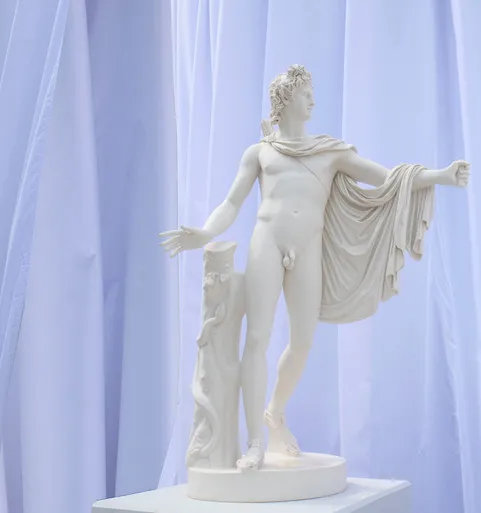Apollo of the Belvedere

God of the arts, Apollo stands tall before us, radiant in beauty and commanding in presence. He strides forward, his right leg extended, left leg bent gracefully behind. His cloak is draped over his shoulders, and a quiver strap crosses his bare chest. Did he once hold a bow outstretched? A lowered hand gripping an arrow? Perhaps he has just exacted his divine vengeance—his face serene, his gesture precise.
The truth remains uncertain. This statue lay buried for centuries before its rediscovery in 1489. It was swiftly acquired by Pope Julius II, who installed it in the courtyard of the Belvedere Palace—a space soon filled with masterpieces and whose name would become forever linked with the sculpture.
Inspired by a lost bronze by the Greek sculptor Leochares, this Roman copy quickly became a benchmark of classical perfection. Artists from across Europe traveled to admire it in Rome, while countless plaster casts, marble and bronze copies, and engravings spread its fame far and wide.
In 1798, amid the upheaval of war, the statue was taken to Paris as a prized trophy and displayed in what would become the Louvre Museum. Its Parisian sojourn ended in 1815, when Apollo returned to the tranquility of the Belvedere Courtyard and the niche where he still stands today.